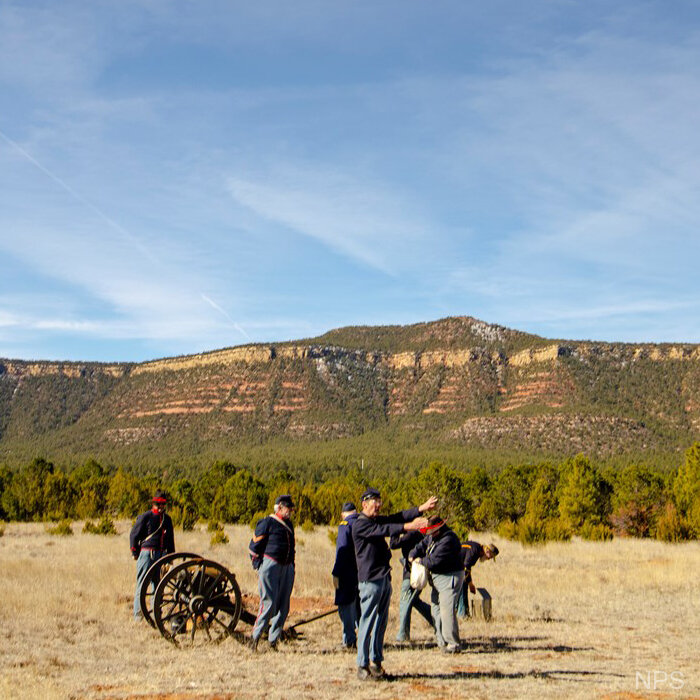Connections to the Sand Creek Massacre
We encourage you to continue your journey of intellectual, emotional, and social engagement. Historical events connected to the Sand Creek Massacre can be directly linked to the following National Park Service sites. Interpreting your visits to these sites with the additional historical context of the Sand Creek Massacre is sure to elevate your experience and broaden your perspective.
Bent’s Old Fort, CO
William Bent believed that peaceful relations between whites and Indians were “good for business.” Here traders, trappers, travelers, and the Cheyenne and Arapaho tribes came together in peaceful terms for trade. William Bent married into the Cheyenne tribe, Owl Woman daughter of White Thunder, and became the Cheyenne people’s most trusted counselor.
Fort Laramie, WY
The 1851 Fort Laramie Treaty recognized land in eastern Colorado, western Kansas, western Nebraska, and eastern Wyoming as Cheyenne and Arapaho lands in exchange for safe passage of American citizens.
Glorieta Battlefield at Pecos National Historical Park, NM
In the Battle of Glorieta, Major John M. Chivington led more than 400 Union soldiers in successfully stopping a Confederate force from Texas advancing into the Southwest. For his role, Lt. Edward Wynkoop of the 1st Regiment Infantry, Colorado Volunteers, was promoted to major and in 1864 went on to assume command of Fort Lyon, on the Santa Fe Trail.
Fort Larned National Historic Site, KS
From Fort Larned, Edward W. Wynkoop worked to keep peace between settlers and the Tribes as an Indian Agent appointed by the President. Wynkoop advocated the relocation of friendly Indians to Fort Larned, but the Army rejected his plan. Black Kettle moved his band of Cheyenne to the Washita River in Indian Territory.
Washita National Battlefield, OK
On November 27, 1868, after surviving the Sand Creek Massacre, Chief Black Kettle and his wife Medicine Woman Later were killed along with over 50 Cheyenne people when Custer’s 7th Cavalry attacked their camp at the Washita River in Indian Territory.
Santa Fe Trail National Historic Trail
Commerce along the Santa Fe Trail brought Hispanic and Anglo traders as they moved goods over 900 miles of the trail between Missouri and New Mexico, increasing contact with the Plains tribes.
Fort Union National Historic Site, NM
Near the intersection of the Cimarron and Mountain Routes of the Santa Fe Trail, Fort Union was a base of military operations and a key stop along the Trail. Fort Union was, at one point, manned by troops from the 1st Regiment Infantry, New Mexican Volunteers, some of whom were present at the Sand Creek Massacre. Both Major John M. Chivington and Lieutenant Silas S. Soule passed through the Fort in 1862.
Castillo de San Marcos, FL
At the conclusion of the Red River War, many Native Americans in the southwestern territories had been forced onto reservations including Fort Sill in current-day Oklahoma. From here, 74 prisoners, many of whom were survivors of the Sand Creek Massacre, were chosen for confinement and sent to Castillo de San Marcos, also known as Fort Marion. Many of the imprisoned died here, crazed by isolation and torment, victims of exhaustion and confinement.










